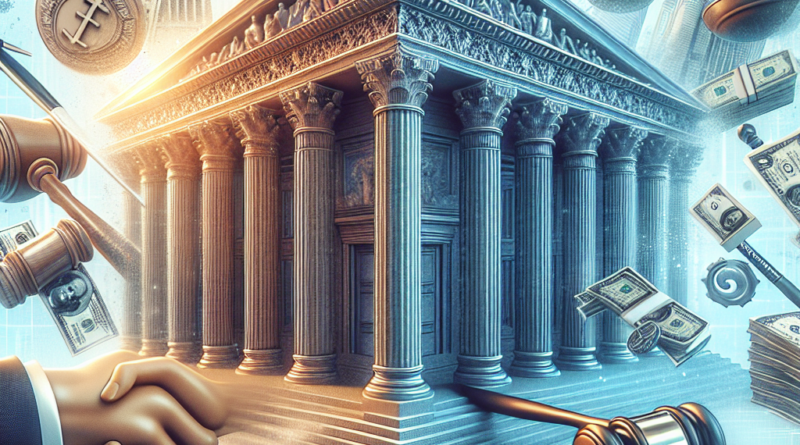The State-Bank Relationship: Shaping Modern Finance
The Hidden History of Banking in Venice
While tourists meander through the enchanting canals of Venice or admire Tintoretto at the Scuola Grande di San Rocco, the complex history of banking often eludes their thoughts.
However, for those intrigued by the niche history of banking promises exchanged among states, financial institutions, and merchants, Paolo Zannoni’s book, “Money and Promises: Seven Deals that Changed the World,” is a compelling read.
As a banker, Goldman Sachs advisor, and Prada board member, Zannoni emphasizes the importance of this often-ignored narrative.
The Evolution of Banking
“Money and Promises” intricately details the historical evolution of different banking systems and governments, illustrating how they transitioned from physical currencies to promises of payment, largely driven by the financial demands of costly wars.
In the opening chapter, Zannoni provocatively notes that debt isn’t necessarily negative.
He illustrates through historical examples how states utilized banking debts to support citizens during critical times, subtly guiding readers through a reconsideration of debt’s societal role.
Microfinance and Early Banking Practices
The text explores early microfinance models pioneered by Franciscan monks in the 15th century, who collected donations from wealthy benefactors to lend to the impoverished in need.
These initiatives eventually led to the establishment of charitable banks in Naples and the peculiar “credit pledges” used, notably by the artist Caravaggio for gambling and pleasures.
Zannoni further introduces us to a savvy group of European money changers who pegged the ecu de marc to stable gold coins in the 16th century, foreshadowing the Bretton Woods Agreement of 1944.
Innovations in Accounting
A fascinating chapter delves into the accounting practices using counting sticks, which paved the way for thriving London banking houses like Hoare & Co in the 17th century.
This innovative method allowed the exchange of broken sticks as substitute currency or payment promises.
Some of these artifacts remain preserved in the vaults of the Bank of England today.
Zannoni recounts how the Bank leveraged these practices to enhance the nation’s public finances in the early 1700s.
Original Research and Historical Insights
While much of the historical content is second-hand, the author’s extensive original research shines through, such as unearthed records detailing the first months of the Banco Giro in Venice, dating back to 1619.
He also reveals that the 18th-century economist Ferdinando Galiani had an affinity for Naples’ finest chocolate, which he purchased with banking debts.
Zannoni’s excitement for archival discoveries is evident, describing his experiences as both thrilling and enlightening.
Complex Financial Themes
Despite the inclusion of straightforward diagrams in the opening chapter, Zannoni’s work is not merely an explanatory read for casual audiences.
The book tackles high-level economic questions, particularly the disadvantages of switching public debt for banking debt, examined through a historical lens.
While exploring various banking systems across Europe, the final chapters shift focus to the emergence of currency as debt in colonial America and Lenin’s early thoughts on Bolshevik banking during the Russian Revolution.
A Fascinating Historical Account
Zannoni asserts that this book serves as his “apologia pro vita sua,” a nod to John Henry Newman’s 19th-century writings that rehabilitated the reputation of a Catholic convert.
Yet, it remains unclear whether Zannoni seeks similar redemption or uses irony regarding his banking career.
Ultimately, “Money and Promises” transcends personal narrative, offering an intriguing account of early lending practices and the intertwined growth of nascent states and financial institutions, crucial for the functioning of economies and societies.
© The Financial Times Limited 2024.
All rights reserved.
This content cannot be redistributed, copied, or modified in any way.




